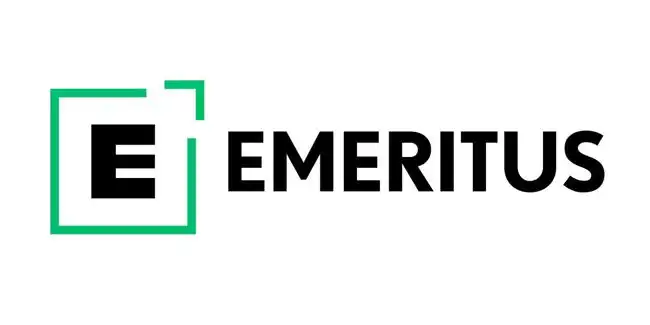Agile for instructional designers? If somebody had said that to me back 15 or 20 years ago when I was just starting out, I would’ve probably asked for an interpreter. Yet here we are applying Scrum and its siblings to instructional design.
It’s no secret that Agile methodologies have been making inroads in a variety of verticals. I’ve got a friend who’s been a long-standing Agile evangelist and has gently pushed a bunch of brick-and-mortar software and non-software companies toward Agile. The guy got a little carried away and once shared with his wife the candid idea of applying Agile to their domestic projects, like home finance, laundry, and social life. He got a really dirty look in response.
Nevertheless, it all started with software development and took root in the IT environment. Even so, when you come to think of it, is there such a big difference in developing quality code or shipping quality courses?
Turns out, Agile for instructional designers makes sense in our somewhat rigid industry.
A Quick Word on Agile vs ADDIE
Apparently, educational technology has endeavored to keep up with the methodology trends and find tailored solutions to specific eLearning issues. One of those solutions is the ADDIE course development model that has been widely adopted across the industry.
However, ADDIE is now viewed as something belonging to the previous generation of eLearning.
First off, it’s a linear strategy that follows a predefined plan that is not subject to change until a deliverable is out. Should you consider any changes in the output, you’d have to restart the process from scratch, taking every single step once again, as is customary in waterfall software development.
In contrast with ADDIE, the Agile approach allows for smaller builds and quicker iterations rather than copiously planned projects that end up inflexible to change. Short iterations enable developers to receive fast feedback on their work; namely, insights from learners and fellow instructional designers who haven’t got a blurred eye in the very same project – unlike you and your teammates.
The main goal of this iterative process is to deliver a minimal viable product (MVP) that will improve gradually, add new functionality, and include impartial client feedback.
5 Times When Agile for Instructional Designers Works
In my opinion, there are at least five reasons, or situations, why and when you need to turn Agile and never look back:
1. Your project is a long one
Is your course or instructional project succinct and has a manageable volume? Lucky you! In most cases, it’s quite the opposite.
Longer timeframes imply changes throughout the process that are hard to factor in from the very start, and hard to deal with when you are used to waterfall or sequential ADDIE planning. It’s time that plays against waterfall advocates. Missing bigger deadlines is not the same as accumulating a reasonable backlog and resolving issues in subsequent iterations.
So how about breaking up your training projects into smaller (1-2 weeks) sprints and checking on your progress?
2. You can’t map it all up to the last detail
There is a multitude of eLearning scenarios mirroring similar issues in software development. For instance, however much you’d like to dot the i’s, cross the t’s, and get all scripts and storyboards ready in advance, it probably makes sense to get through with the functional modules first. That’s how you achieve short time to market and understand the real needs of your target audience without delivering the product in painstaking detail.
Once you are into the big picture of your training projects and shift from a modular view into the Agile perspective, it’s a totally different way to design engaging content.
3. Changing requirements
Target audiences, standards, and tasks evolve – and you have to adapt to the change. Every time that happens, you ought to come up with a quick flexible solution and get yourself some leeway so you don’t have to rebuild the whole system, or course, from the bottom up.
The majority of project-based activities, be it eLearning, software development, or building construction, undergo a standard number of iterations.
All in all, someone (individual, company or community) files a request, you investigate and design, then you create a tangible or non-tangible product and deliver it to the customer. In this regard, eLearning is pretty much like the software development space, which aims to fulfill an objective of an enterprise or user group.
More often than not, these stakeholders may change their minds, since visualizing the entire project from beginning to end is a daunting task. That’s why instructional designers and software project managers want to stay on the flexible side and respond to modifications with a wise battle-hardened approach. An Agile approach, in this case.
4. You have doubts and lack user feedback
Getting quick feedback from a given user group may benefit project members and guide the project towards a viable product or course, rather than a well-documented ‘deliverable’. Waterfall strategies in eLearning or software development put off feedback till the end of the process (the acceptance phase), effectively delivering an ultimatum: like it or not, it’s over.
5. Smart reuse of previous eLearning materials
It’s worth noting that re-purposing of previously developed content (for example, using transcription software to turn audio lectures into text documents/notes) turns up as one of the key incentives to go Agile.
Leveraging existing training content, individual instructional designers and institutions give a second chance to high-quality yet outdated courseware. All these slides and gargantuan volumes of information may be updated in line with modern requirements. If we were in the software development space, we would probably use the term ‘legacy systems’. That said, revamping legacy systems is a classic Agile task in both environments.
The modernization process unites experts on the subject, innovators and conservatives alike, since the ultimate goal – revitalizing knowledge – is too tempting to neglect. As a result, this could lay the foundation for a knowledge repository providing restricted or shared access to fellow project members, instructional designers and keen learners inside an intranet or online.
People often tell me: “I need an incentive to use Scrum or a custom learning methodology. Is there any software package or instrument that would put me on the right Agile track?”
My Captain Obvious answer is: It’s more about your mindset and willingness to adopt new techniques. However, there is, indeed, a bunch of tools that can help instructional designers and development teams with Agile planning and execution – from whiteboards and Kanban cards to special equipment. In any case, I suggest you review project management tools available on the market and see if any of those fit your workflows. Feel free to check out my recent blog posting about Scrum/Agile project software and share your feedback on the subject.
A Closer Look at Agile Learning Design
Now that we’ve talked about the basics of Agile, let’s take a look at some of its elements in regards to eLearning and training projects.
First off, let’s mention the term Agile Learning Design (ALD), which stands for any kind of course development methodology focused on flexible, high performance, and collaborative training content delivery. The term derives from software development, with the exception that here we are talking electronic content – developed for and distributed to remote learners.
There is a multitude of terms associated with Agile eLearning training projects, so I’ll concentrate on just a few:
- Successive Approximation Model (SAM). The SAM approach was conceived as a replacement for ADDIE, yet with a focus on effective collaboration and iterative development. Authorship of this methodology is attributed to Michael Allen, CEO of Allen Interactions.
- Instructional Systems Design (ISD). ISD refers to many things eLearning, however it most commonly denotes a systematic approach to requirements specification, or gathering learner needs and objectives in order to tailor the final solution accordingly. ISD pursues fast time to market and adheres to ALD principles, emphasizing the importance of viable audience-tested training courses.
- Rapid Application Development (RAD). This notion includes a plethora of design techniques aimed at speeding up app development, or training content development – with minimal planning involved.
- Rapid Content Development (RCD), or Rapid eLearning. This Agile instructional design methodology encompasses preparation, iterations, reusable modules, interaction and tools for fast and cost-effective implementation. As the name suggests, this approach prioritizes speed over functional requirements, so course authors can re-adjust their views should something go wrong.
Drawbacks to Agile Learning Design
Of course, there is always a fly in the ointment, and Agile in eLearning has its obvious limitations.
Since educational training projects are less formalized than those in IT, it’s way more difficult to make project stakeholders invest time, effort and constructive criticism in intermediate project stages. In specifically sophisticated matters, there may be external consultants involved – bloating the ‘Agile team’ and making it trickier to review smaller chunks of work, or sprints.
Agile requires continuous involvement and collaboration from all team members, including subject matter experts, instructional designers, and developers. This can be resource-intensive and may not be feasible for all organizations.
Some eLearning content, like compliance training or heavily regulated industry-specific training, might not be suitable for Agile due to the need for a highly structured and stable approach.
Last but not least, eLearning development tends to be fixed-price based, which poses certain challenges to Agile with its known flexibility in terms of changes and budgets.
Final Thoughts on Agile for Instructional Designers
Is Agile a revelation to the training development industry? Not really.
Technically, it’s been here for over 15 years. Nothing new under the sun, indeed.
Not to mention the LMS packaging formats we still use: TinCan was not born yesterday, and SCORM – well, that’s quite another story… Anyway, eLearning is a conservative field, yet it’s apparently jumping on the Agile methodology bandwagon.
The main driver of this paradigm shift is the need to address growing volumes of data and galloping paces of content development.
Time to market is key. If you are late, that means you’re out of the game, however sophisticated or revolutionary your course or product.
Those who make it faster to a certain milestone and receive valuable feedback get a second chance to blend in improvements and turn it into a real gem of a market-tested or audience-tested product.
Looking to upskill in instructional design and want to learn about Agile and other learning models?
Check out the Professional Certificate in Instructional Design program from Emeritus.
In this intensive 5-month program, you’ll go deep into the fundamentals of instructional design, learn about popular ID models, and explore best practices for eLearning. It covers everything you need to know and more to become an effective instructional designer.
You can learn more about the program and request a brochure at this link.
 Emeritus Professional Instructional Design Certificate | Online Certificate Course
Emeritus Professional Instructional Design Certificate | Online Certificate Course
Gain firsthand expertise in instructional design principles and methodologies through this unique Professional Certificate program. Create impactful learning solutions and improve people's ability to learn.
Have any questions about using Agile for instructional design? Let us know by commenting below.


